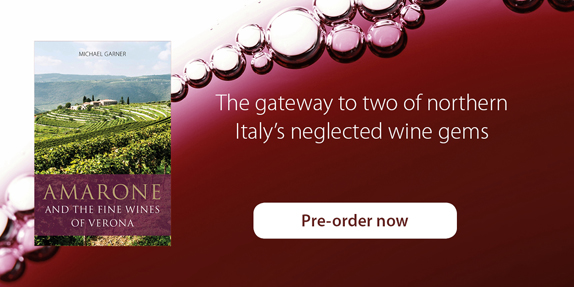Getting to grips with Veronese wine
30 November 2017 by Rebecca in Classic Wine Library, Wine and spirits
By Michael Garner, author of Amarone and the fine wines of Verona
Over the next few weeks, I’ll be looking at different styles of wine produced under the various Soave and Valpolicella denominations. But first, a little background in terms of geography, growing conditions and grape varieties to set the scene. The two areas overlap and are each divided into three distinct subareas. From the west Valpolicella Classico takes in five different communes between Sant’Ambrogio di Valpolicella and Negrar where, at the valley’s eastern edge, the simple Valpolicella DOC area begins. It surrounds the smaller area of Valpantena (which has its own DOC) and extends as far as Montecchia di Crosara, near the town of Soave. The valleys of Mezzane, Illasi and Tramigna are therefore ‘common ground’ as the Soave territory begins at Mezzane, extending eastwards as far as the ridge which separates the Val d’Alpone from the Val di Chiampo and the neighbouring province of Vicenza. It contains the Classico zone north of the twin towns of Soave itself and Monteforte d’Alpone and also includes the rarely seen DOC of Soave Colli Scaligeri – broadly speaking the hillier areas beyond Classico. The overall territory for Soave and Valpolicella lies just north of Verona, indeed some of the suburbs extend into the lower-lying Valpolicella vineyards.
The vineyards occupy the lower slopes of the ridges and valleys which fan out downwards from the high karst table of Lessinia to meet the northern bank of the river Adige as it runs through the city heading east. Most of the valleys are aligned from north to south, which creates near perfect growing conditions at altitudes between around 100 to 600 metres above sea level. Soils are mainly limestone- and clay-based though pockets of volcanic-based tufa are also found in Valpolicella. In Soave, the eastern boundary of the denomination is formed of a high ridge connecting several volcanic peaks (Calvarina, Crocetta and Duello): dark, basalt-based soils dominate as far as Soave Classico on the opposite slopes of the Val d’Alpone where both main soil types (limestone- and basalt-based) intermingle.
The training system is mainly the classic local pergola (around 80% of the vineyards in both areas). Once maligned as a source of over-production, pergola is currently undergoing a revival, largely owing to the effects of climate change. The overhanging leaf canopy serves to protect the ripening fruit from scorching in summer temperatures which have climbed ever higher over the last couple of decades. This has been accompanied by a more sensible approach towards containing yields; nonetheless some of the more influential personalities (such as Dal Forno in Valpolicella and Anselmi in Soave) continue to insist that Guyot produces better quality fruit.
Grape varieties are almost entirely local (and rarely seen elsewhere). In Valpolicella, Corvina is the most widely-planted and most-prized variety. Its aromas are subtle yet expansive – a mix of cherry and hedgerow fruits (blackberry, damson and sloe) with a telltale twist of black pepper; the palate is medium-bodied with brisk acid and light but fine tannins. Corvina-based wines show excellent ageing potential and remarkably fine balance – locals regard the variety as their Pinot Noir. Corvinone plays a lesser role and needs careful management to contain yields, and the right growing conditions (working best at higher altitudes) to arrive at good quality fruit. A more robust and tannic wine than Corvina, it has interesting tobacco- and herb-like aromas. Rondinella is more of a faithful retainer, reliably productive but rarely distinguished. The recent tendency to produce deeper-coloured and more structured wines, has seen the rise of rare local varieties like Oseleta, a grape with a notably low liquid to solid ratio (it’s all skin and pips) which nonetheless can add colour and plentiful tannins. Sadly though, its arrival has hastened the decline of Molinara which, though pale-coloured, produces wines with surprising fragrance and delightful, salty and minerally flavours.
In Soave Garganega dominates, covering almost 90 per cent of the vineyard area. Like Corvina the variety gives wines with a broad aromatic profile: floral-toned orchard fruits (apple, apricot and pear particularly) with notes of mandarin zest and preserved lemon. The palate has good, often zesty, acidity and is ripely textured with intriguing saline and mineral flavours. The other mainstay of Soave is Trebbiano di Soave (aka Verdicchio) and its presence at up to 30 per cent of the total can make a real difference. Some of the best examples include a relatively high proportion. e.g. Pieropan’s Calvarino where the variety’s steely acidity and zingy, green freshness really lifts the blend.
Coming up next week: I examine the ‘simpler’ styles of Soave and Valpolicella and recommend some of the finest examples.

